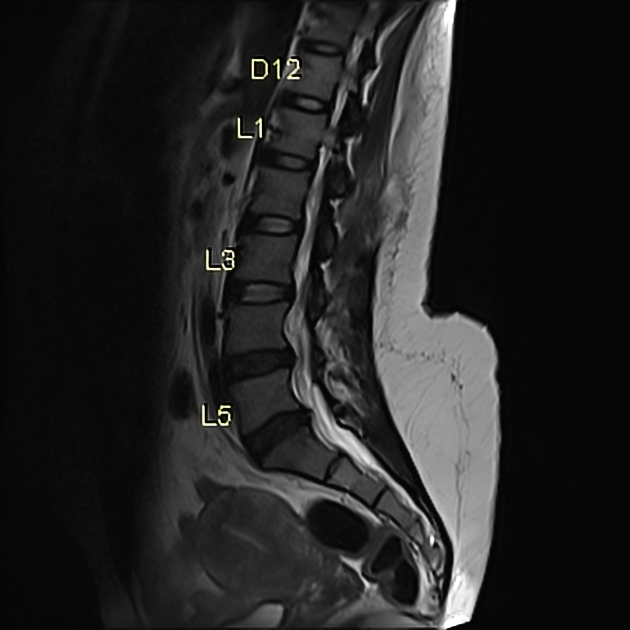A high intensity zone (HIZ) is defined as a bright white signal on T2W images in the posterior annulus of the intervertebral disc and represents a fissure in the posterior annulus.
On this page:
Aetiology
A high intensity zone generally occurs due to:
- post-traumatic changes
- instability of the spine and degenerative changes of the disc
Pathology
High intensity zones in the posterior annulus represent the ingrowth of the vascularised granulation tissue into the tears in the posterior part of the painful disc induced by inflammation. The posterior annular fibres are structurally weaker compared to the anterior annular fibres, thereby predisposing them to disruption 1.
Radiographic features
MRI
- T2 high signal intensity in the posterior annulus on sagittal images
- the high intensity zone can occur at the superior, middle, or lower portions (most common) of the annulus
- lumbar area at L4/5 and L5/S1 levels are more commonly involved





 Unable to process the form. Check for errors and try again.
Unable to process the form. Check for errors and try again.